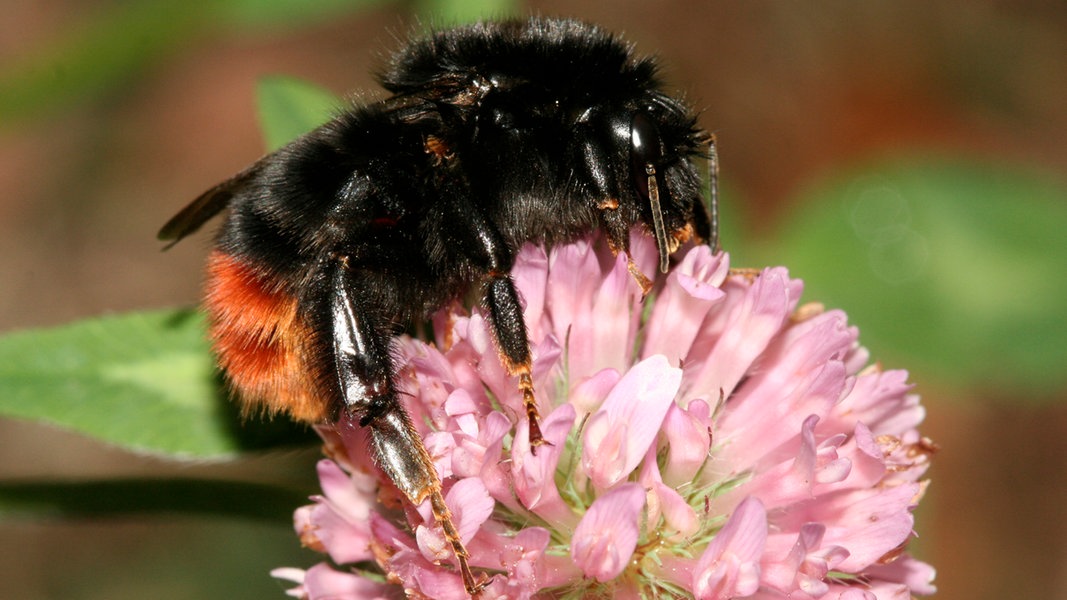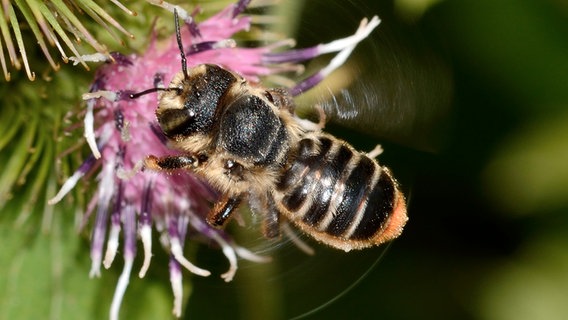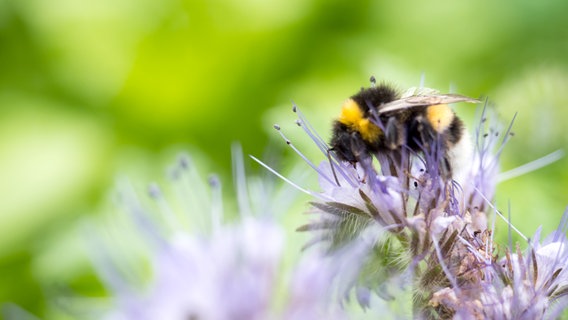Status: 08.06.2023 1:38 p.m
How are our insects doing? NABU wants to find out with the insect summer campaign. Nature lovers should count six-legged friends for one hour until June 11th and from August 4th to 13th.
Whether as food for Birds or as pollinators – insects are very important for our ecosystem, but their numbers are declining. In order to draw attention to this problem and to get an overview of species diversity and frequency, NABU is inviting you to the third time “insect summer” on. From June 2nd to 11th and August 4th to 13th, nature lovers are invited to count insects and report the results to NABU.
Look out for bees and co. for an hour
Participation is easy: look out for insects of all kinds within a radius of about ten meters in the garden or in the great outdoors for about an hour, make a note of your observations and report them to NABU later. Sunny, windless days are particularly suitable for counting insects. If you like, you can count in any number of different places. The only important thing is to submit a new report for each location.
Useful: magnifying glass and camera
Everything can be counted – not only adult insects, but also larvae or pupae. Since many insects are very small, it makes sense to have a magnifying glass or a photo camera with a zoom or telephoto lens. In order to avoid double counting, one does not count all the animals of a species observed during an hour, but only the largest number of animals of a species that are present at the same time. An example: If a peacock butterfly flies by at the beginning of the observation period and another half an hour later, it could it be the same animal. Therefore, only one peacock butterfly is reported.
App helps to identify the animals
A mobile phone app from NABU helps identify the insects.
Anyone who cannot clearly identify a species can also make vague reports, such as aphids instead of black bean aphids. The helps identify the animals App for the campaign, which NABU offers free of charge. It contains a recognition aid based on artificial intelligence. With it, photographed insects can be identified step by step.
Which bumblebee species is most common?
Beginners can also start with a targeted search for bumblebees: This year, NABU would like to focus on finding out about the different species of bumblebee. The three most common species – field bumblebee, ground bumblebee and stone bumblebee – can be easily distinguished by their different rear parts. The NABU adds identification tips.
Enormous biodiversity
With 33,000 different species, the diversity of insects in Germany is great. According to NABU, nobody should be put off by this. Even experts do not know nearly all species. Experience has shown that more than half of all sightings are of just 100 species.
Eight types of core are in focus
For each of the two counting periods, NABU has selected eight core species that participants should keep an eye out for, and the conservationists also offer one for them counting aid for download. This eight species are in focus from June 2nd to 11th:
- Admiral
- Asian ladybug
- Blutzikade
- Florfliege
- grove hoverfly
- leather bug
- Steinhummel
- Tagpfauenauge
Bumblebees ahead in the 2022 census
The environmentalists assume that there are fewer and fewer butterflies, bumblebees and other six-legged friends. With the counting campaign, they want to identify frequencies and trends in species and populations. The data should be compared over several years. In the 2022 census, participants most frequently observed bumblebees, bees, hoverflies, and butterflies such as the lesser tortoiseshell.
Further information



